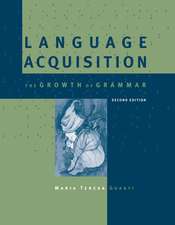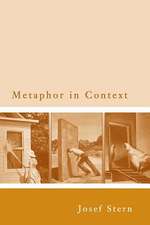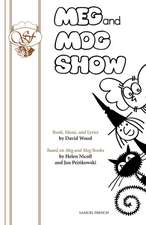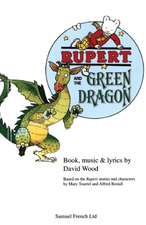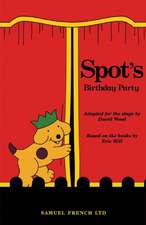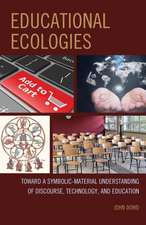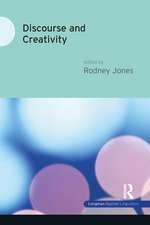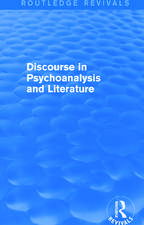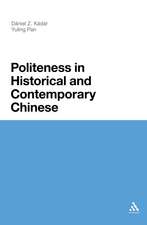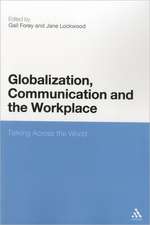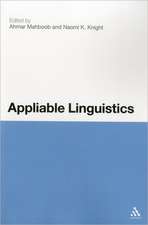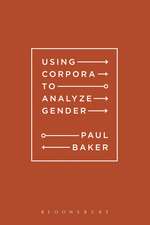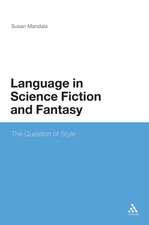Formulaic Language and Second Language Speech Fluency: Background, Evidence and Classroom Applications
Autor David Wooden Limba Engleză Hardback – 30 iun 2010
This volume presents a comprehensive look at the phenomenon of formulaic language (multi-word units believed to be mentally stored and retrieved as single units) and its role in fluent speech production. Focusing on second language speech, the book provides an overview of research into the role of formulaic language in fluency, details a study which provides evidence of that role, and outlines teaching plans and strategies to foster it. This important area has not been examined in such depth and scope before, and this work has many implications for future research and language pedagogy. It will appeal to researchers in discourse analysis and second language acquisition.
| Toate formatele și edițiile | Preț | Express |
|---|---|---|
| Paperback (1) | 257.32 lei 6-8 săpt. | |
| Bloomsbury Publishing – 22 feb 2012 | 257.32 lei 6-8 săpt. | |
| Hardback (1) | 1008.01 lei 6-8 săpt. | |
| Bloomsbury Publishing – 30 iun 2010 | 1008.01 lei 6-8 săpt. |
Preț: 1008.01 lei
Preț vechi: 1452.28 lei
-31% Nou
Puncte Express: 1512
Preț estimativ în valută:
192.93€ • 198.83$ • 162.88£
192.93€ • 198.83$ • 162.88£
Carte tipărită la comandă
Livrare economică 01-15 martie
Preluare comenzi: 021 569.72.76
Specificații
ISBN-13: 9781441158192
ISBN-10: 1441158197
Pagini: 256
Ilustrații: 39
Dimensiuni: 156 x 234 x 25 mm
Greutate: 0.54 kg
Editura: Bloomsbury Publishing
Colecția Continuum
Locul publicării:London, United Kingdom
ISBN-10: 1441158197
Pagini: 256
Ilustrații: 39
Dimensiuni: 156 x 234 x 25 mm
Greutate: 0.54 kg
Editura: Bloomsbury Publishing
Colecția Continuum
Locul publicării:London, United Kingdom
Caracteristici
Will help teachers and course designers to support the development of fluency in L2 learners
Cuprins
Introduction
Part I: Background
1. Fluency
2. Formulaic sequences
3. Cognitive processing
4. Social and cultural factors
Part II: Evidence
5. Design of the study
6. Quantitative results
7. Qualitative analysis
8. Conclusions of the research study
Part III: Applications
9. Fluency and formulaic language in the classroom
Bibliography
Index
Part I: Background
1. Fluency
2. Formulaic sequences
3. Cognitive processing
4. Social and cultural factors
Part II: Evidence
5. Design of the study
6. Quantitative results
7. Qualitative analysis
8. Conclusions of the research study
Part III: Applications
9. Fluency and formulaic language in the classroom
Bibliography
Index
Recenzii
"Formulaic Language and Second Language Speech Fluency is a comprehensive and highly readable exploration of formulaic language and its relationship to fluency in second language speech production. The volume is organized into three parts that provide readers with relevant background literature on formulaic language in fluency, details of a study designed to explore the role of formulaic language in fluency, and classroom strategies to promote fluency through formulaic language. This timely volume on a previously largely unexplored topic offers scope and depth that will appeal to researchers and students in second language acquisition as well as areas of Applied Linguistics; it should also be required reading for all second language teachers"
'Wood's monograph is a great piece of research, addressed in form and in contentboth to Second Language Acquisition and Language Testing experts, and to non experts... ''Formulaic Language and Second Language Speech Fluency'' can be considered a good example of SLA research and a step forward toward the identification of the cognitive processes underlying language acquisition.'
'Wood's monograph is a great piece of research, addressed in form and in contentboth to Second Language Acquisition and Language Testing experts, and to non experts... ''Formulaic Language and Second Language Speech Fluency'' can be considered a good example of SLA research and a step forward toward the identification of the cognitive processes underlying language acquisition.'
Notă biografică
David Wood teaches applied linguistics at Carleton University, Canada, where his research interests lie in formulaic language, acquisition of L2 spoken language and academic discourse, and language teacher education. He has taught English language and applied linguistics in Canada, Greece, and Japan.


